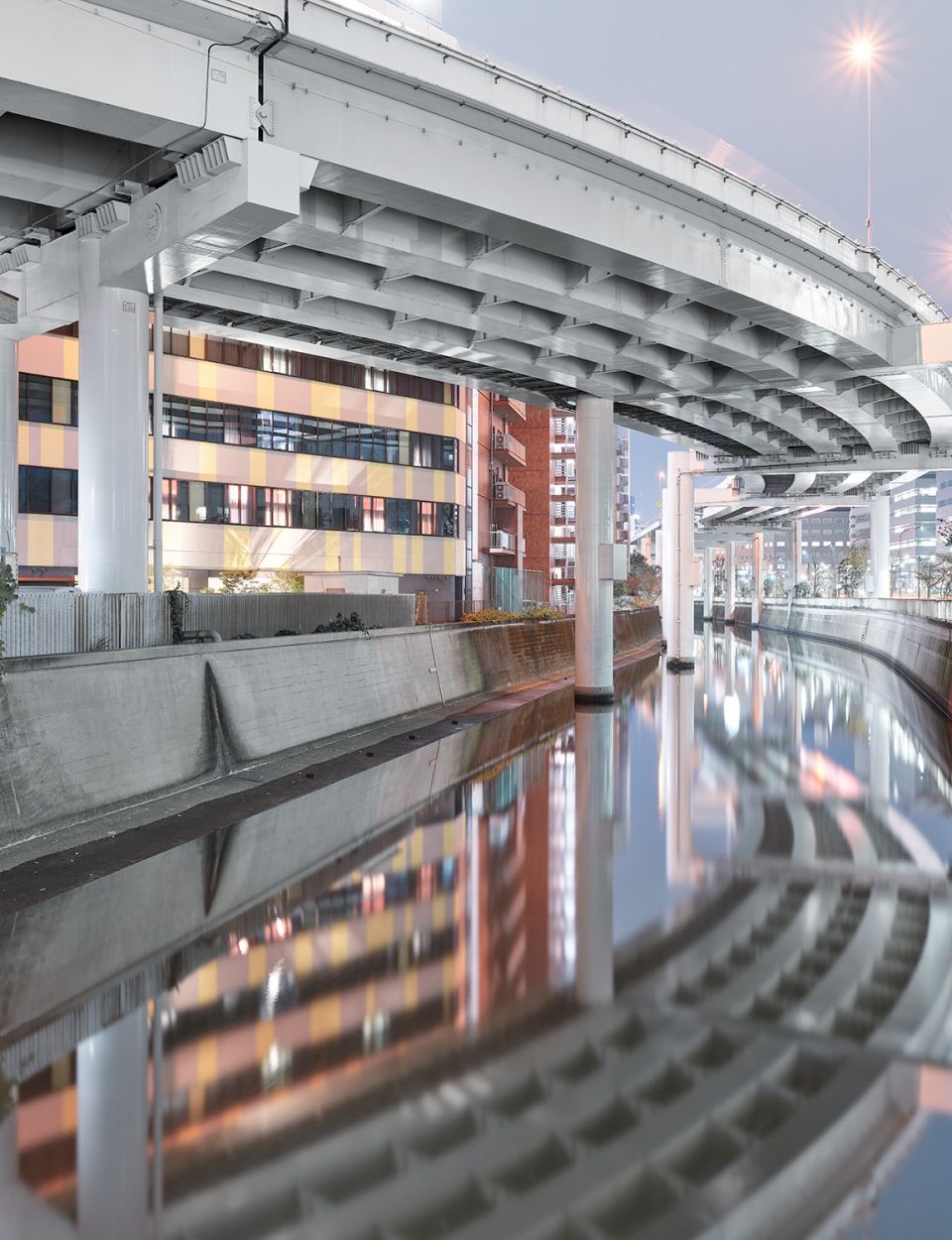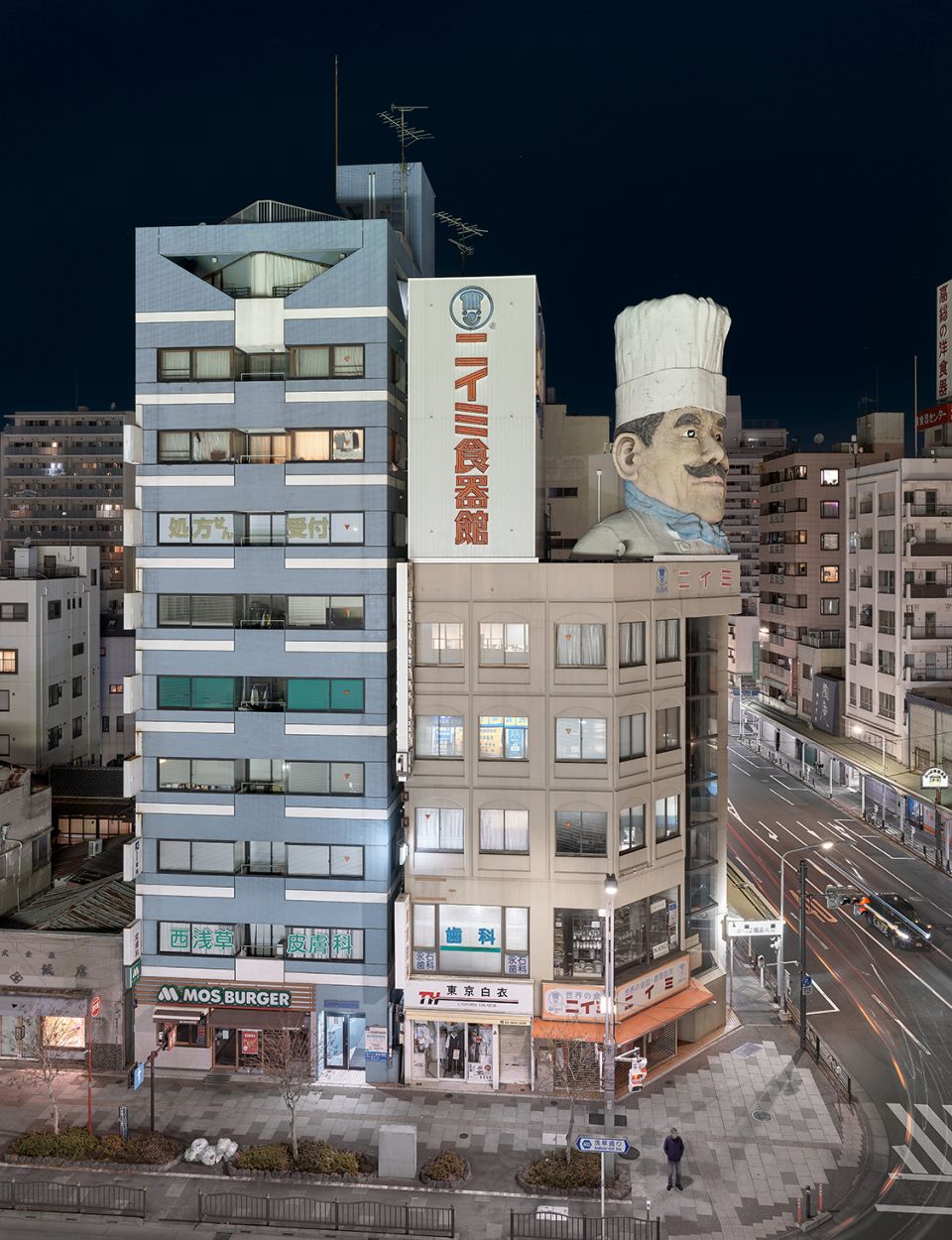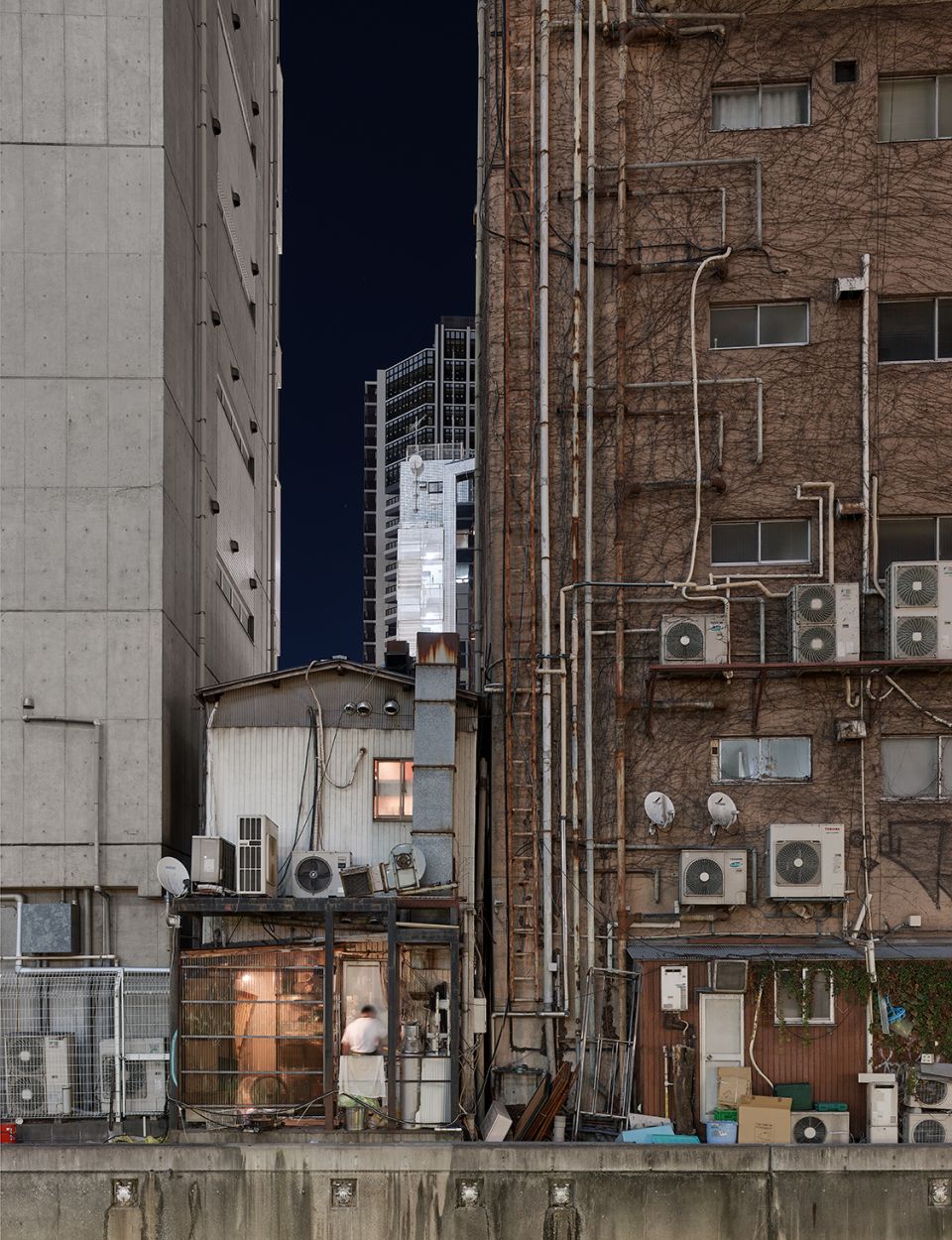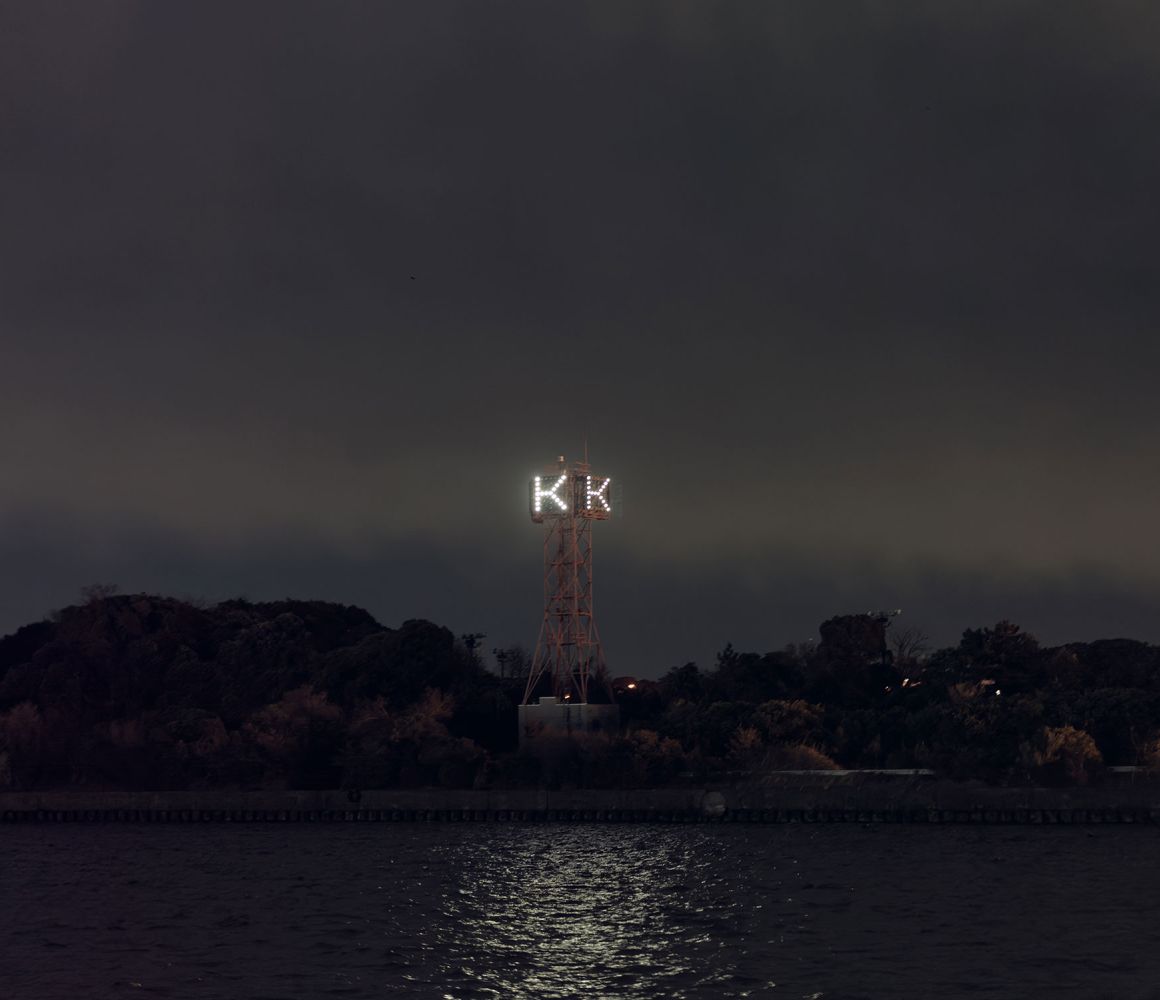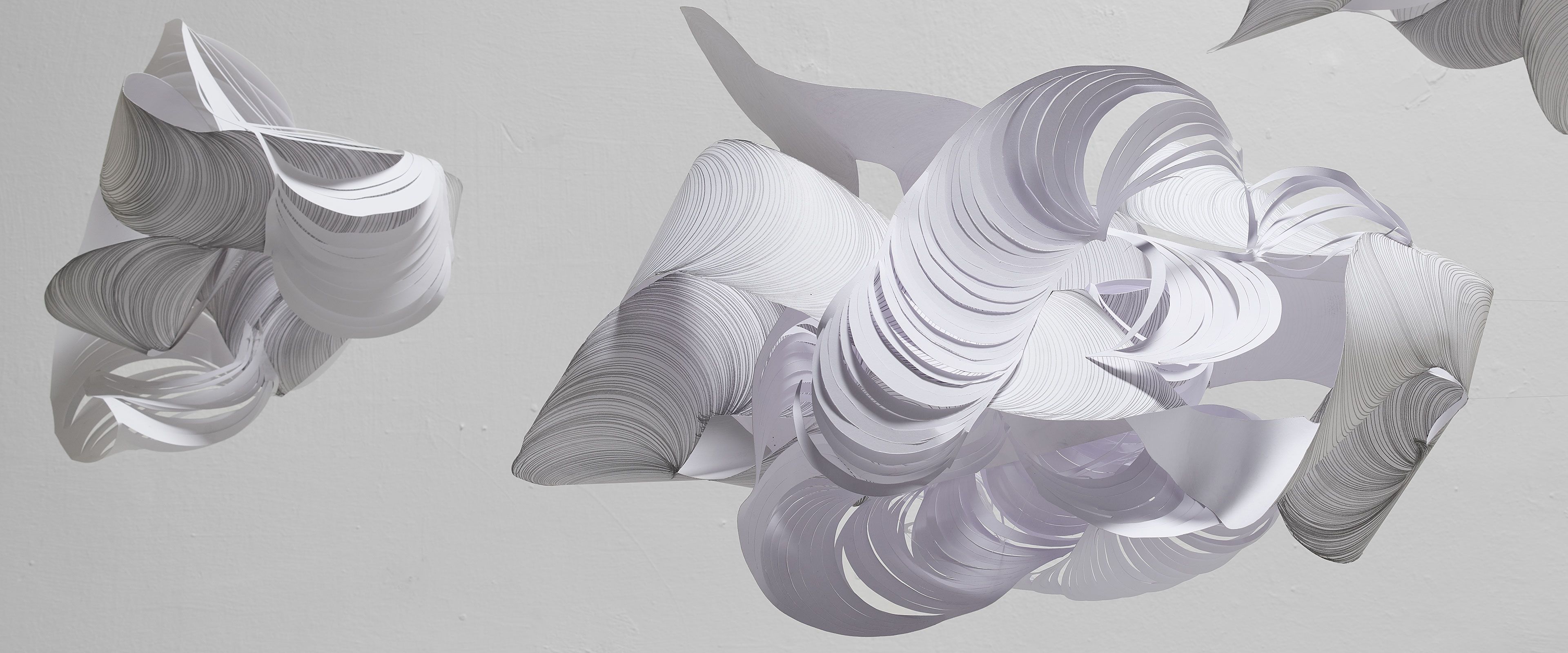
STRANGEPLACE Sabishii
An Attempt at Melancholy

The exhibition brings together Peter Voigt’s deserted architectural photographs of Tokyo and Katrin Paul’s fragile paper works in a quiet dialogue about “Sabishii” 寂しい – that feeling of emotional emptiness and gentle melancholy that places and spaces can convey through their visible loneliness and hidden memories.
Katrin Paul — Installation
Peter Voigt — Photography
Opening remarks — Max Pauer
Installation
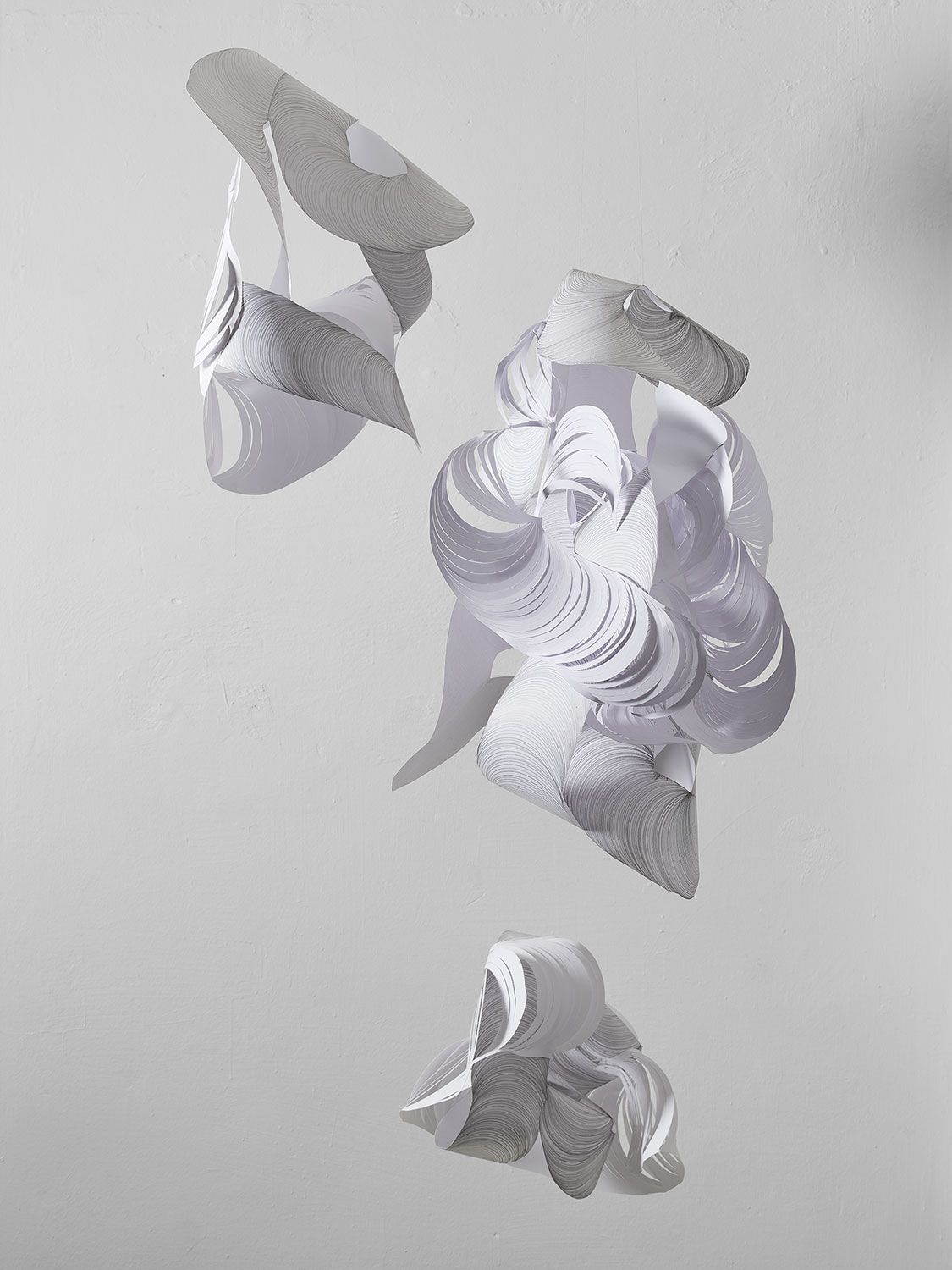
Katrin Paul is an artist working internationally with paper, installation, and photography. Her studies took her to Dortmund and Karlsruhe as well as to the Tama Art University in Tokyo, where she lived and worked during several study and scholarship stays. In her artistic practice, she explores the materiality of paper, transforming it through techniques such as tearing, folding, and the application of heat and liquids. Her works move between drawing, object, and spatial installation. Paul has exhibited her work in Japan, the USA, and Europe and has participated in numerous exhibitions.
geschnitten – gezeichnet
Papier, Bleistift auf Papier
60 × 50 × 50 cm
60 × 60 × 80 cm
30 × 30 × 40 cm
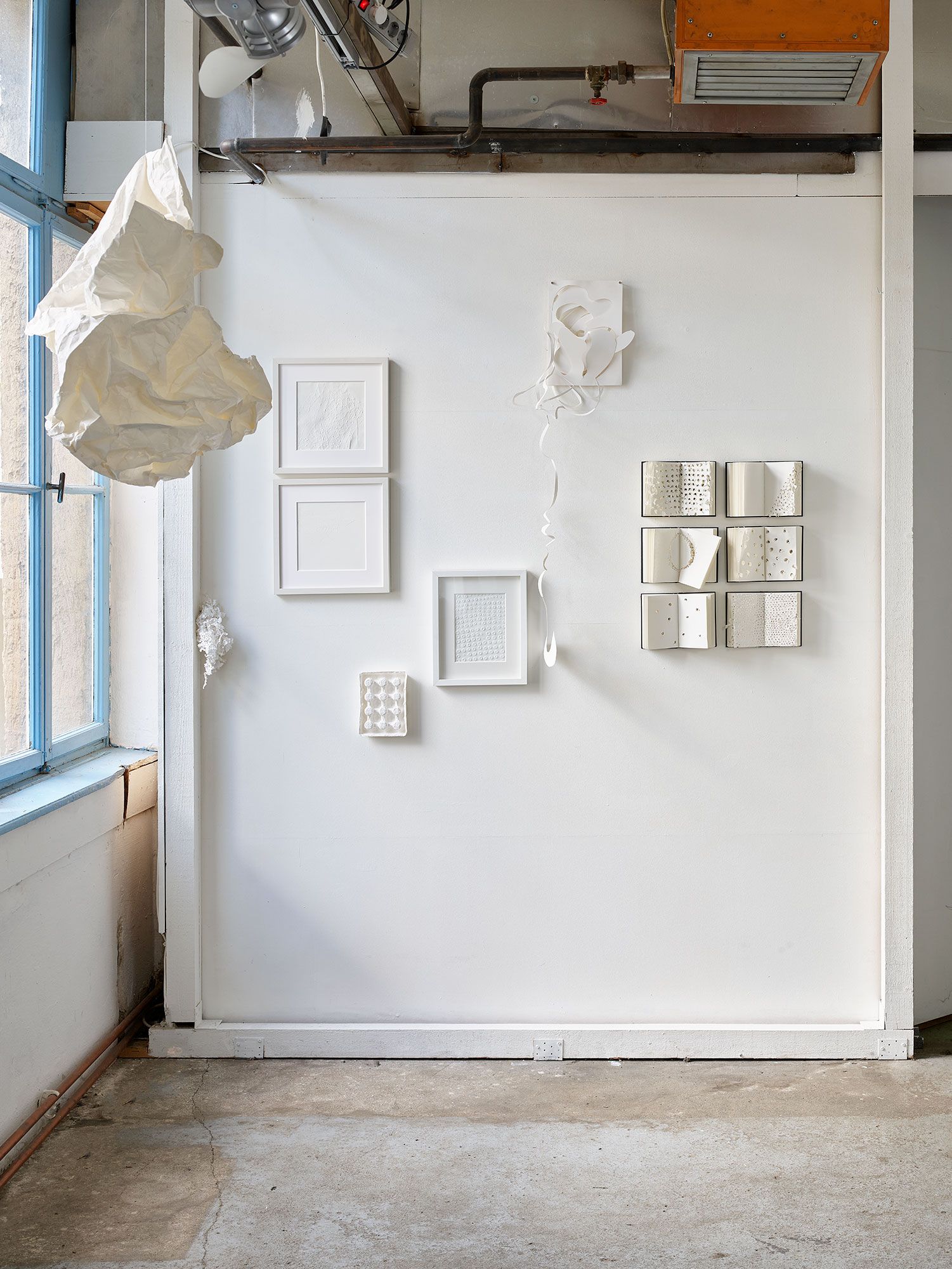
geschnitten – gelöchert
Solitär — sequence
Paper, drawing, pencil on paper.
40 x 40 x 66 cm
Photography

“Sabishii” gathers urban views by Peter Voigt from Tokyo and Hiroshima, made at night or under overcast skies. Voigt avoids iconic set pieces and focuses on architectural constellations that arise from a multitude of details and components. The digital large-format camera works with rectified perspective and high precision; scale, rhythm, and joints become legible. The images are sober yet narratively condensed: meaning emerges from arrangement, intervals, and traces of use. The scenes are largely unpeopled; occasional figures appear—not as protagonists, but as markers of scale and time. Otherness and self-relation coincide; what is seen partly detaches from the named place and draws attention to the act of seeing.



Daigo Fukuru Maru
Lucky Dragon No. 5 (Daigo Fukuryū Maru)
Tokyo, March 1, 1954 remains the hinge of this object’s biography: exposed to radioactive fallout from a U.S. hydrogen bomb test at Bikini Atoll, the crew suffered acute radiation; radio operator Aikichi Kuboyama later died. The preserved boat is shown in a Tokyo museum. Voigt’s photograph isolates the original wooden planks—not as illustration, but as a field of evidence: grain, joins, patches, scrapes. The image holds an unusual optical clarity and plane-true precision; detail renders almost unreal, inviting the eye to read surface as document. Meaning emerges from arrangement and interval, from the measured plane of the boards. Within Sabishii, the image keeps its distance; it trusts material to register time and impact, allowing a quiet narrative condensation without spectacle.
Lucky Dragon No. 5
120 x 90 cm
Hahnemühle Photo Rag Baryta
Halbe Distanzrahmen
Edition 5 +2 AP

Akihabara Prizes (triptych)
Three photographs of crane-game winnings from Akihabara—small manga figures bought or won in the arcades of the “electric town.” At night, the same streets are worked by women in analogous costumes, steering passersby into hostess and themed bars, sometimes with the suggestion of paid companionship. The echo between mascot and person introduces a slightly seedy undertone, noted from a deliberate distance. The works are framed with circular windows and pastel passepartouts, heightening the toy-like display and a purposeful kitsch surface.
Akihabara
28 x 35 cm
Hahnemühle Photo Rag Smooth
Passepartout colored
Halbe Distanzrahmen
Edition 8 +2 AP
K-District, Tokyo
Distant night photographs across Tokyo Bay showing petrochemical tanks and waterfront industry. The illuminated “K” beacons mark parts of the harbor’s navigational system; the area belongs to the broader Keihin/Keiyō industrial belts around Tokyo Bay. This series intersects with Voigt’s ongoing documentation of industrial sites.
Industrial Tokyo 1
24 x 30 cm
Canson Baryta Photographique Matt
Halbe Distanzrahmen mit Museumsglas, schwarz
Edition of 8 + 2 AP
Industrial Tokyo 3
24 x 30 cm
Canson Baryta Photographique Matt
Halbe Distanzrahmen mit Museumsglas, schwarz
Edition of 8 + 2 AP
Industrial Tokyo 2
24 x 30 cm
Canson Baryta Photographique Matt
Halbe Distanzrahmen mit Museumsglas, schwarz
Edition of 8 + 2 AP



